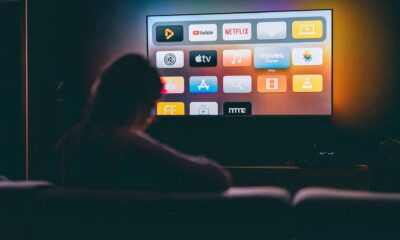Indian Cultural Diversity and the Growing Indian Economic Divide
Branding people poor and backward in a country with abundant natural resources, crop diversity, multiple micro-economic activities, human capital, value-added skills, and experience is an insult to people and fuels the economic divide. India’s numerous economic sectors can generate employment on a sustainable basis. Instead of spending hundreds of crores of rupees on populism, central and state governments should protect and preserve all means to sustainable economic activities. Hone the Indian cultural diversity to bridge this growing Indian economic divide.
The Gundlapochampally Story
Malla Reddy, 60, lives in Gundlapochampally village in the suburb of Hyderabad city. He wakes up at 4 am, feeds his seven buffaloes, milks them and sells the milk to his customers. By 6.00 am, he completes his morning work and the same work he does in the evening. Malla Reddy earns Rs 1600 daily, and his net income is Rs 800.00 daily. He can earn Rs 1200 per day if the price of cattle feed is reduced and water and grazing land are available. Malla Reddy is among a few cattle farmers who continue his profession. The new generation does not want to do physical work and looks for sedentary jobs.
After selling their agricultural land to construction companies, most of his fellow villagers work as security guards, housemaids, and salesmen or run small shops; they earn less than Malla Reddy. Some villagers invested their money in building houses and living on rental income or bank interest. When they had land, they had a sense of ownership, though they were not getting the profit they always deserved due to middlemen in the marketing chain. Due to ignorance and compulsion, the farmers used to sell agricultural produce at a throwaway price. Today, the demand for food is high, but the villagers have yet to have land to till. Only 15% of agricultural land is left, which may disappear into concrete jungles soon.
Once, Gundlapohcampally village had 7707 acres of fertile agricultural land, which grew paddy, grapes, mango, guava, custard apples and various native fruits. There were five lakes which met the water needs of the villagers. Today, only two lakes survive in bad condition. Had the government protected the agricultural land and water bodies and given the villagers transparent marketing support to sell their agricultural products, the villagers would not have sold their farmland and prospered.
Indian Cultural Diversity
In all big metro cities, thousands of youth from North East India, Odisha, Bihar, Uttar Pradesh, and West Bengal work in malls, hotels, restaurants, shops, and housing colonies as security guards, waiters, cooks, salespersons, etc.
Bipul, 21, belongs to a village just 100 kilometers from Guwahati. He works 12 hours a day as a security guard in a gated housing society in Hyderabad for Rs 12000 monthly. “We won’t get this much amount in our village regularly,” said Bipul, “the income from agriculture and other sources is very low in our villages; with that income, we can’t get quality school and healthcare facilities.” Migrants from North East India travel four days to reach Hyderabad by train in a precarious condition; they want Rs 10,000 to Rs 15,000 per month. The native people of North East India have the skill to add high value to handicraft and handloom products. They grow a variety of crops, and they know how to harness the natural sector. The governments of the Northeast Indian states should understand the native skills that add high value to simple woods, bamboo, and grass. The artisans need a transparent market and honest and efficient officials who can protect and preserve the priceless handicraft and weaving traditions.
Many people from Odisha migrate to big cities for regular income. “People have left farming for the last three generations. The size of the land holding has shrunk. Farmers can’t depend on agriculture. Today, more than 40% of agricultural land remains uncultivated. The low-lying area of Rengali Dam does not have irrigation facilities. Canal facility has not come yet,” said Akshay Kumar Bishi, Bajraota village of Odisha. Another example of the rich heritage and Indian cultural diversity is the Raghurajpur village of Odisha, famous for Patta Chitra. A genuine patta chitra of 6×3 sq feet, made with natural colours by a skilled painter, can fetch above Rs 5 lakh in a global craft bazaar. Only a skilled artist can accurately paint different Odissi postures with bhabas(expressions). It is essential to save skill and creativity by engaging officers who understand the craft traditions and are committed to promoting rare skills. Handicraft and handloom traditions of Odisha can generate colossal employment and foreign currency.
Waterless life, low wages, poor education and lack of health facilities compel thousands of villagers from Namdev of Maharashtra to work in Hyderabad. Tourism, rainwater harvesting structures, revival of water bodies, a safe atmosphere and transparent marketing facilities will create employment opportunities for the villagers in Namdev. Medicinal plants are abundantly found in the Madurai district of Tamil Nadu. Big Ayurvedic farms source the raw materials from the villages through their agents. The villagers collect medicinal plants for the agents, but their average income is Rs 75 daily. Over-exploitation of medicinal plants has already depleted the stock. In India, every Indian district has exclusive products and skills which can become sustainable economic activities. Branding people as poor and backward amid abundant natural resources and skills is a paradox.
The growing Indian economic divide can be answered in rich Indian towns and villages. Rather than calling these people backward, unleashing the power of Indian cultural diversity could not just create skills and jobs but also boost India on the world stage.
Disclaimer: The views and opinions expressed in this article are those of the authors and do not necessarily reflect the official policy or position of the publication








































